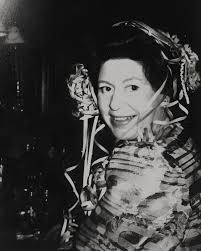The Life and Legacy of Princess Margaret

Introduction
Princess Margaret, the younger sister of Queen Elizabeth II, remains a significant yet often misunderstood figure within the British royal family. Her life was a tapestry of rebellion, glamour, and personal strife that reflected the changing attitudes of British society throughout the 20th century. Understanding her legacy is essential for appreciating the complexities of both the monarchy and contemporary British culture.
Early Life and Royal Duties
Born on August 21, 1930, Princess Margaret was raised alongside her sister, Elizabeth, in a life dictated by duty and tradition. As the daughter of King George VI, she stepped into the public eye early but resisted the confines of royal expectations. She took on various official royal duties, particularly during the late Queen’s reign, but was often perceived as the more rebellious sibling, challenging conventions both in her personal life and public persona.
High Profile Relationships
Margaret’s love life captured the media’s attention, particularly her relationship with Peter Townsend, a divorcee whom she was romantically linked to in the early 1950s. Their relationship caused a scandal at the time, leading to Margaret deciding to remain single rather than risk the monarchy’s reputation. Ultimately, she married Antony Armstrong-Jones in 1960, becoming the Countess of Snowdon, but this partnership also faced its share of challenges, leading to their divorce in 1978.
Cultural Impact
Despite her often tumultuous life, Princess Margaret’s impact on British culture was substantial. Known for her style and elegance, she became a fashion icon of her time, influencing trends and public perceptions of the royal family. Her passions for the arts and philanthropy led to her involvement in numerous charities, focusing on causes related to the arts and health, further solidifying her public persona as a progressive royal.
Conclusion
Princess Margaret passed away on February 9, 2002, leaving behind a complex legacy that invites both admiration and controversy. Her life serves as a reflection of the tumultuous times she lived through, offering insight into the evolving nature of the monarchy and its engagement with modern society. As discussions regarding the relevance of the royal family continue, Princess Margaret’s story remains a vital part of the narrative, reminding us of the personal sacrifices often overshadowed by public duty. The lessons from her life still resonate today, reflecting on personal freedom, societal expectations, and the ongoing evolution of royal identity.







